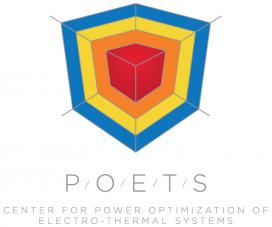Simulation Model Enables Study of Heat-Transfer Nanostructures
A simulation model has enabled the study of potential heat-transfer nanostructures of copper mesh in the pursuit of more efficient power electronics at the Center for Power Optimization of Electro-Thermal Systems, an NSF-funded Engineering Research Center (ERC) based at the University of Illinois.
Thermal management is key to Improving power electronics efficiency, and the simulation model led to the design of microfluidic embedded cooling that indicates an estimated 54% improvement in performance and 26% improvement in energy efficiency.
Currently, 30% of electricity passes through power electronics; and electric consumption is expected to triple in the next I5 years. More efficient, higher performance, and more reliable power electronics could save the nation one Quad of primary energy today and three Quads in 2030 (one Quad = 1.055 exajoules or EJ). Beyond the U.S. impact, on the global scale, according to the Quadrennial Energy Report, more than 25% of the worldwide annual energy consumption could be saved if widespread (>90%) adoption of these highly efficient power electronic technologies can be realized.
The project’s development of a recipe for fabrication of single-layer wire mesh with copper-inverse opals (CIOs), a nanostructure of copper mesh, also led to the study of the fabrication challenges in creating a five-layer wire mesh with CIOs. The research indicates that the structure could achieve heat flux of about 400 W/cm2 at superheat level of about 14°C, which just below the target heat flux of 500 W/cm2 at superheat level of 10°C.



